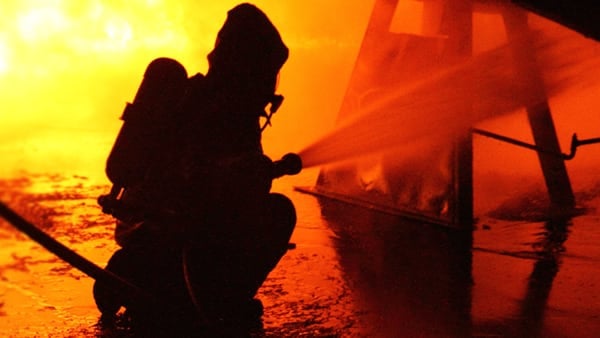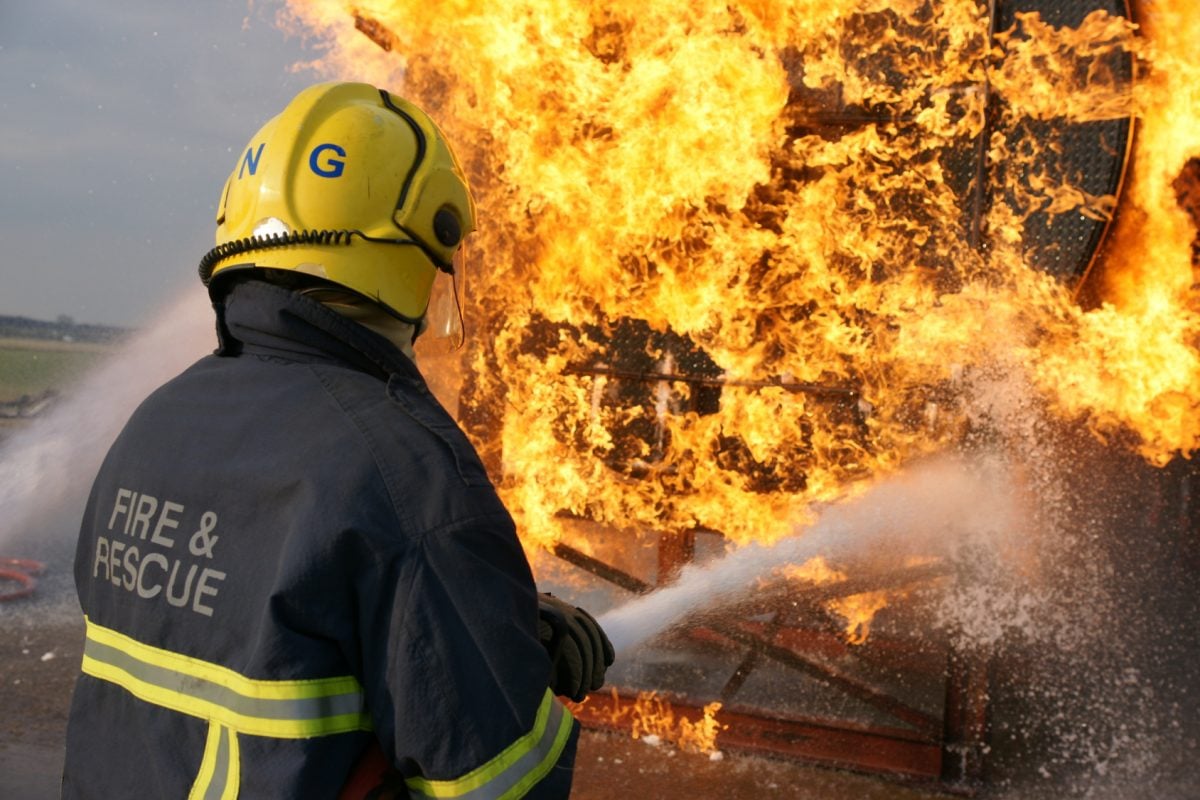
If you are applying for the UK Fire Service, you will need to take a series of gruelling assessments. Possibly the hardest firefighter test, is the role play exercise. This exercise will test your customer service and communication skills to their very limits. The role play firefighter test is a huge pitfall for aspiring Fire Service candidates, and therefore you need to be fully prepared for what is to come. If you think you’ve got what it takes, read on, and we’ll supply you with some top tips on the Firefighter Test: Role Play.
Firefighter Test: what is a role play exercise?
Role play exercises are commonplace in the majority of assessment centres, and are designed to test how well you communicate under pressure or stress. The format of a role play exercise is generally as follows:
- You will be given a brief period of no more than 10 minutes to prepare outside of the room.
- You will enter the room, containing an assessor and a role play actor. The exercise will begin as soon as you enter the room.
- You will engage in conversation with the role play actor for a period of around 10-15 minutes.
- The exercise will finish, and you will leave the room.
During a firefighter test role play exercise, both you and the actor in the room will be playing specific roles. You will play the role of a customer services assistant, or someone in a position of authority. The actor will play the role of someone who requires your assistance, or who has come to you with an issue that they would like you to resolve. This firefighter test will examine your ability to calm them down, and tell them how you intend to deal with their situation.

Fire Service Personal Qualities and Attributes
In order to be successful in a Firefighter test, you will need to demonstrate the Personal Qualities and Attributes (PQAs). This is one of the elements that makes the firefighter test so difficult. You cannot simply reel off the PQAs, this is not enough. It’s imperative that you can show an awareness and understanding of the core competencies, and knowledge of how to use them in real life.
So, what are the PQAs? PQA refers to the key behavioural standards laid out by the organisation, which all employees are expected to follow. These will be extremely important throughout the entire selection process, so pay close attention. Below I have laid out what the Fire Service PQAs are, and how they can be applied:
Commitment to Excellence
Commitment to Excellence is an integral element of any Fire Officer’s role. It involves the following qualities:
- You must be someone who is always looking to improve your standards of working, who can identify when improvement is needed and offer suggestions for implementing this.
- You must be someone who approaches work in a proactive and efficient manner
- You must be a conscientious professional, who ensures that every task is completed to the absolute best of their ability, with maximum attention to detail.
- You must be someone who operates with authority and accountability, who is aware of why the Fire and Rescue service is fundamental to society.
Commitment to Diversity and Integrity
Commitment to Diversity and Integrity is an integral element of any Fire Officer’s role. It involves the following qualities:
- You must be someone who treats everyone you meet in a fair and ethical manner.
- You must be someone who recognises the importance of having a diverse community, who has respect for others’ backgrounds, values and opinions.
- You must be someone who takes responsibility for their own mistakes, and remains 100% committed to the Fire and Rescue Service values, including actively promoting them.
Commitment to Development
Commitment to Development is an integral element of any Fire Officer’s role. It involves the following qualities:
- You must be able to review your own performance, via feedback from others, incident debriefs and personal development reviews.
- You must be someone who is able to identify your own developmental needs, and make a conscious effort to improve and keep up-to-date with changes to technology and procedures.
- You must be able to learn from experiences in order to improve your performance.
- You must be able to learn and then retain large amounts of information, both verbally and in writing.
- You must be able to support, encourage and help your colleagues to improve. This includes being willing to mentor new staff members.
Confidence and Resilience
Confidence and Resilience is an integral element of any Fire Officer’s role. It involves the following qualities:
- You must be able to your emotions during stressful, difficult or emergency situations.
- You must be able to concentrate under pressure, and still produce good results.
- You must be able to challenge, question or explore other options, in order to achieve a successful result.
- You must be someone who does not lose confidence in their own abilities as a result of setbacks.
Effective Communication
Communication is an integral element of any Fire Officer’s role. It involves the following qualities:
- You must be able to communicate verbally in a clear and concise fashion, in a way that is tailored to the person you are communicating with.
- You must be able to show a level of sensitivity towards the person you are communicating with.
- You must be able to recognise verbal cues, and understand body language.
- You must be able to use body language in an effective and reassuring manner.
Openness to Change
Openness to Change is an integral element of any Fire Officer’s role. It involves the following qualities:
- You must be someone who understands the need for improvement and positive progress.
- You must be someone who understands the impact that change can have on the Fire and Rescue Service, but is prepared to adjust to this.
- You must be capable of identifying where positive change is needed, and taking action to support or initiate this.
Problem Solving
Problem Solving is an integral element of any Fire Officer’s role. It involves the following qualities:
- You must be able to remember and then apply key information when making crucial decisions.
- You must be able to adapt your procedures to the environment and situation, in order to minimise risk.
- You must able to generate multiple solutions to problems.
- You must be able to consider the wider implications of your decisions, in order to ensure that all tasks are completed in a safe and efficient manner.
Situational Awareness
Situational Awareness is an integral element of any Fire Officer’s role. It involves the following qualities:
- You must be capable of taking initiative/direct action to ensure the safety of your colleagues, and of performing risk assessment procedures.
- You must be able to show an awareness of crucial safety related information, whilst considering all factors before coming to a decision.
- You must be able to judge space and distance when working with ladders, in order to perform tasks in a safe and effective manner.
Working with Others
Working with Others is an integral element of any Fire Officer’s role. It involves the following qualities:
- You must be able to work effectively with all members of your team.
- You must be able to develop positive working relationships with everyone that you meet, and build rapport with your colleagues.
- You must consider the implications of your actions on the wider team.
- You must be able to support your team members in a sensitive manner, and take action in accordance with this when necessary.
- You must be able to ask appropriate questions and respond appropriately when asked questions.
Now that you’ve seen a detailed overview of the PQAs, let’s get started with the role play itself.
The Firefighter Role Play
The firefighter test role play will take a similar format to other role play exercises. You will be given 10 minutes before the exercise starts, to look over a pre-prepared briefing pack that outlines your role in the exercise. Following this, you’ll be invited into the room and the exercise will start.
In the firefighter test role play, you will be meeting with a distressed or angry member of the public. It is your job to calm them down and resolve their issue in an amicable fashion.
Below I have written out a full example breakdown of how you might go about tackling one of these exercises:
Planning Stage
To begin the exercise, you will sit outside the assessment room for a period of 10 minutes, with a briefing pack and materials to make notes. This stage is extremely important, so it’s vital that you make the most of it. The best way to begin this stage is to read the document in as much detail as you can, whilst still ensuring that you have a fundamental understanding of all the information contained within it. PAY ATTENTION. If the document mentions something specific, for example ‘the time of the incident was at 10:05am then this WILL be important during the exercise, and you’ll be expected to remember and utilise this information accordingly. Some assessment providers will allow you to bring your notes into the assessment room, so therefore it’s extremely important that you take down as much info as you can. I would suggest using a highlighter to indicate the key points as you go through them, and then noting them down so that you can have a period of at least 5 minutes to memorise and learn them.
The Exercise
After the planning stage, you’ll be invited into the assessment room. Remember that the exercise starts as soon as you enter the room. Below I’ve outlined a sample exercise, and how I would go about tackling each stage. In this exercise, you are a fire captain dealing with a distressed member of the public. Following a local blaze, the individual in question cannot locate her son. She is extremely upset, and wants you to help her find him.
STEP 1: After entering the room, my first step would be to shake the hand of the actor and introduce myself. I would then sit down, and invite them to take a seat if they are not already sitting.
Hello Madam, I’m Steven Smith, the Captain of this unit. Thank you for coming to see me. Please take a seat, and we’ll get started.
STEP 2: My next step would be to clarify the problem. I would sensitively ask why the person had come to see me, and what assistance I could offer.
I would like you to know that I am happy to assist you as best as I can, and will do whatever possible to help with your query. In as much detail as possible, please could you tell me what problem you have experienced and how you would like this issue to be resolved.
STEP 3: Whilst the individual gave me the details of their issue, I would make sure that they knew I was listening at all times by using confirmative gestures, such as nodding and expressing myself with phrases such as ‘yes’ and ‘uh huh’. I may also take notes during this period. After the person had finished speaking, I would clarify that they were finished before addressing the issue.
Thank you for sharing all of that with me. Is there anything else that you think might be relevant to add?
STEP 4: Clarify the facts of the case. This simply involves relaying the information that you have heard from the individual, to check that you have heard it all correctly. At this stage you should also ask relevant questions about the case, such as how long the person has been missing for and where they last saw them.
For my clarification, can you confirm that the following is correct…?’ ‘I would now like to ask a few questions based on what you have told me…
STEP 5: Once the information has been clarified, thank the individual again and reassure them that you are taking their issue seriously and will deal with it as a matter of urgency. Then, provide a solution, before checking that the individual is happy with your solution.
Thank you for bringing this to my attention. I can assure you that we will take this issue extremely seriously. Public safety and wellbeing is of utmost importance, and we will deal with this as a matter of urgent priority. As soon as this meeting has finished, I will be starting an investigation into the whereabouts of your son. We will do everything in our power to locate him and bring him back home safely, and will keep you informed on our progress at every stage of the investigation. Does this sound like a reasonable solution?
STEP 6: Once you have confirmed that the individual is happy with your intended question, thank them for coming to see you and make sure there is nothing else they are worried about before they leave.
Thank you again for coming to see me. Are there any other issues that are concerning you, and if so, how can I help with them?
If you’ve found this firefighter test blog useful, then check out our FULL guide on How To Become A Firefighter. Jam packed with incredible tips and information, collected by previous serving high ranking firefighters, this is the ultimate resource for anyone looking to join the Fire and Rescue service! For details on recruitment, visit the UK fire service website.

